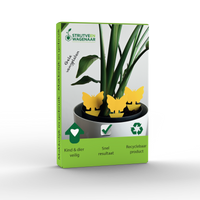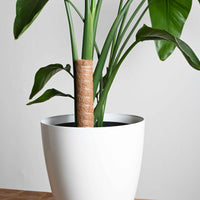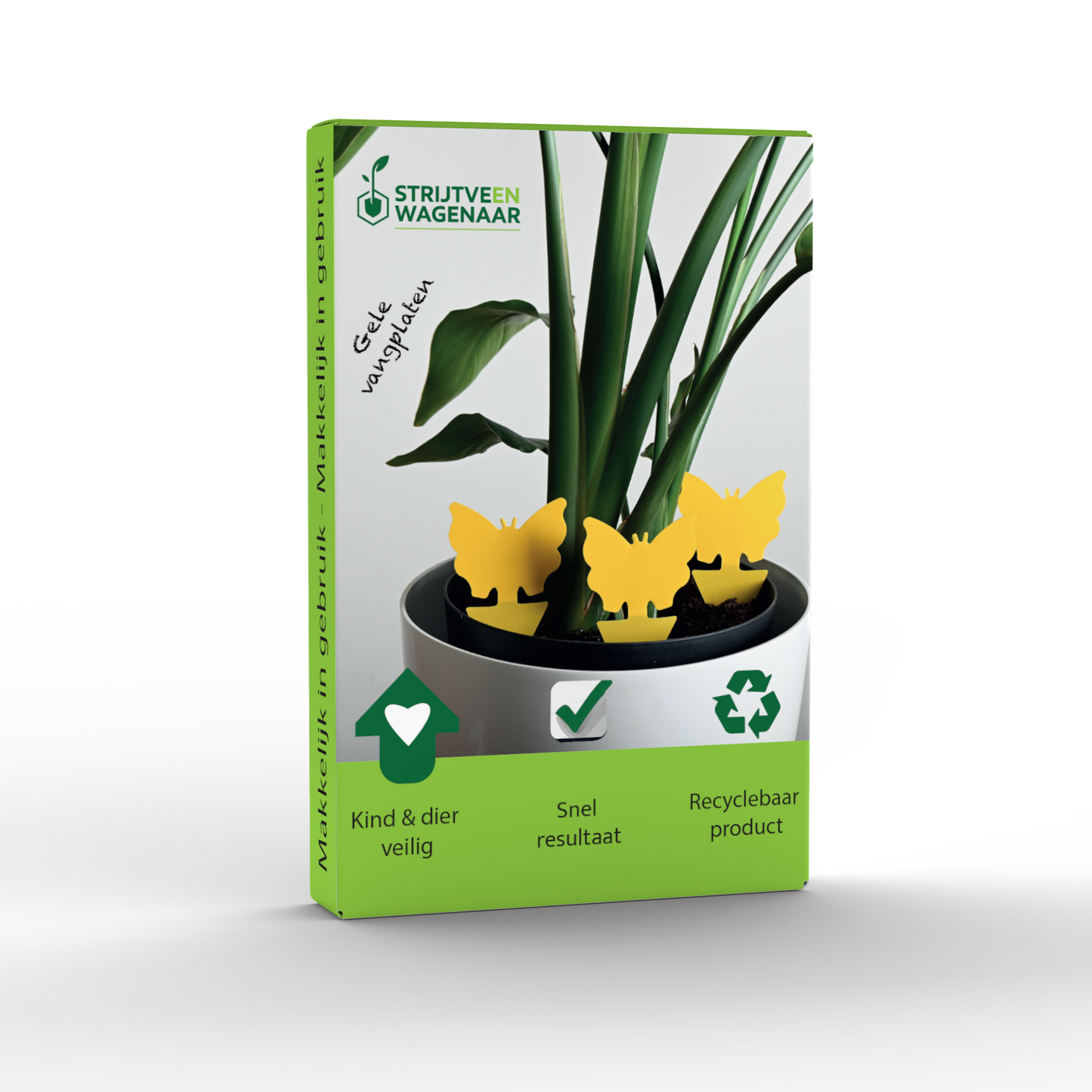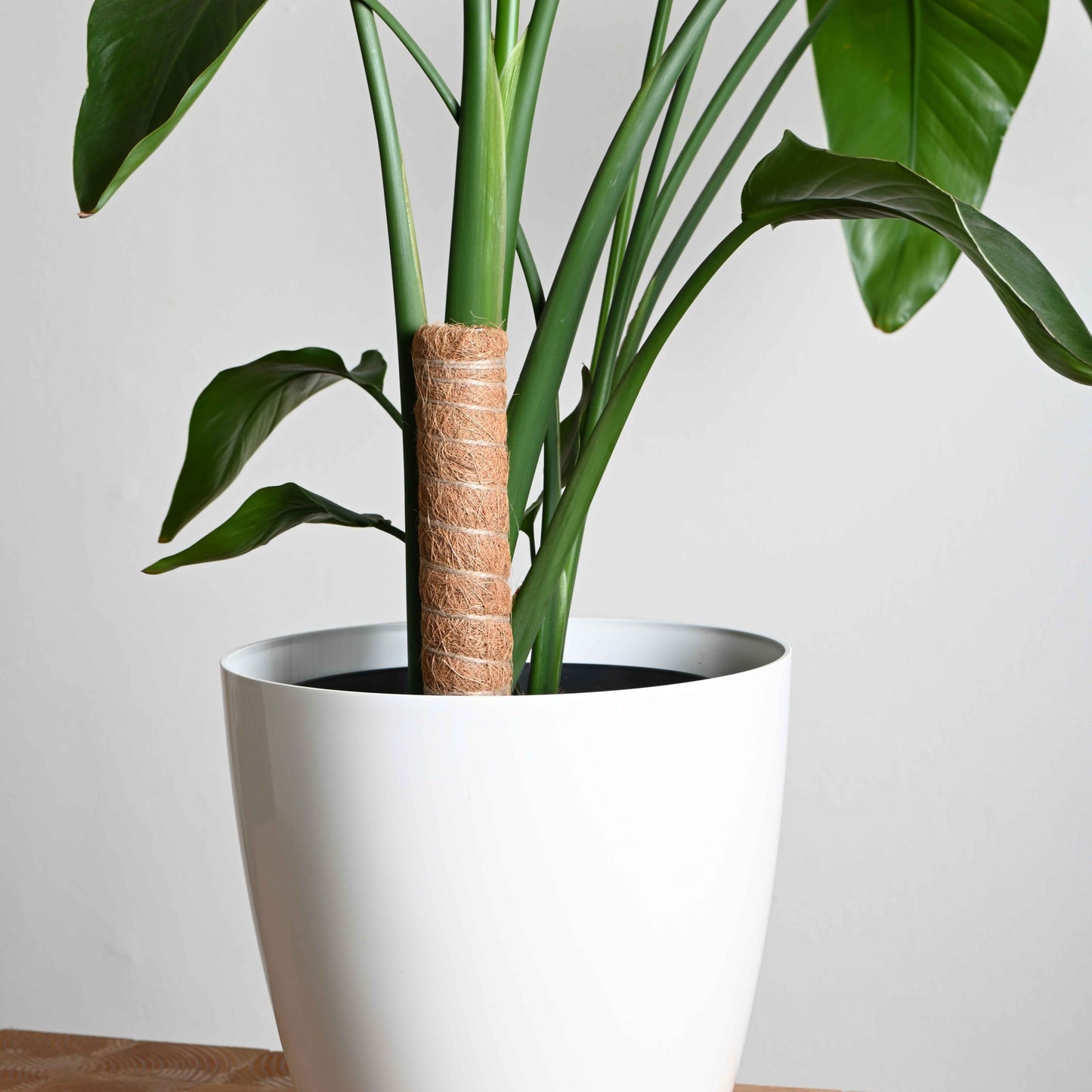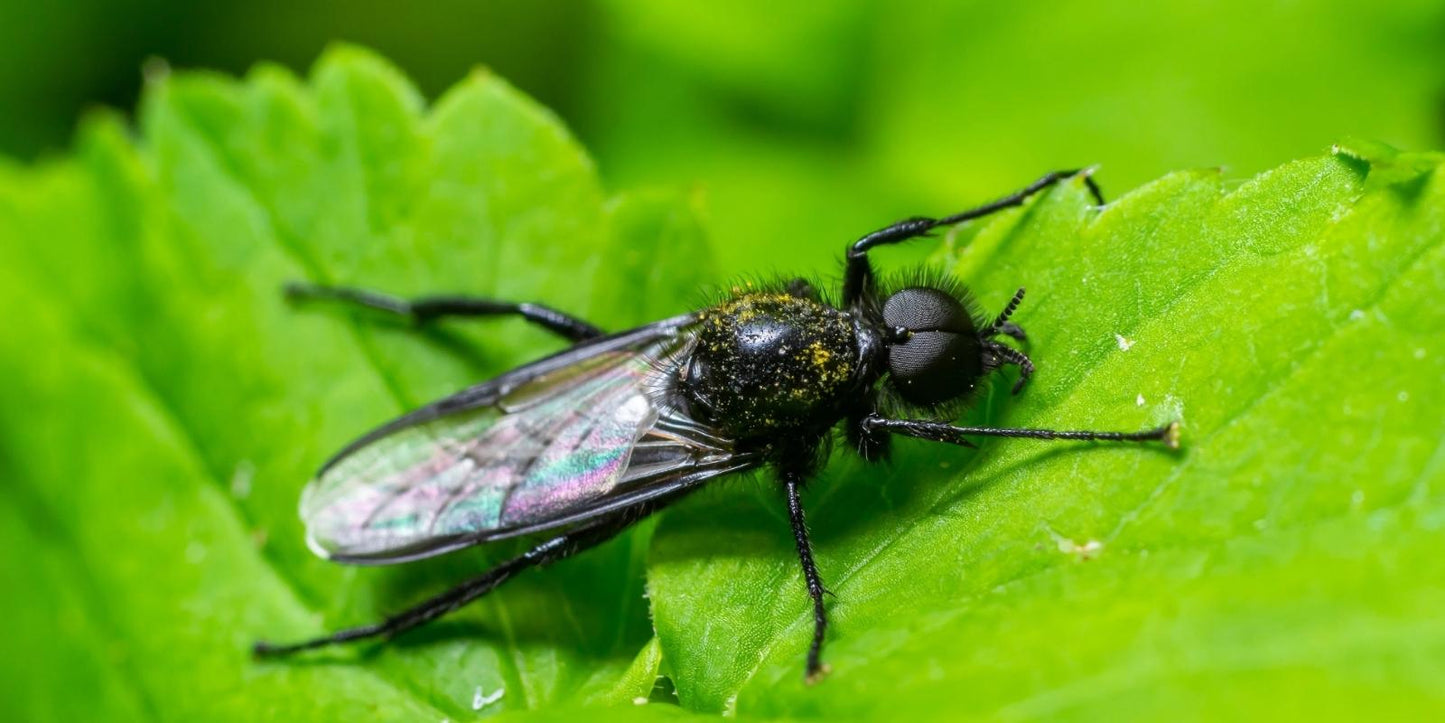
A fungus gnat infestation in your home can be incredibly annoying, especially if you have plants in your home that you take good care of. These small flying insects can quickly become a problem if you don’t get to them fast enough. In this blog, we’ll tell you all about fungus gnats: how to recognize them, how to prevent them, and what effective methods you can use to get rid of them. With these tips, you can ensure that your home and plants stay healthy, without being bothered by these uninvited guests!
What are fungus gnats?
Fungus gnats, also known as sciarid flies, are small, black flies that are often found around houseplants. These flies are usually no larger than 2-3 millimeters and often fly around in swarms, especially near the soil and plant roots. Although the adult fungus gnats themselves are harmless and do not cause direct damage to your plants, it is mainly the larvae that can cause problems. The larvae develop in the moist soil and feed on organic material, including the roots of your plants. This can lead to wilting, stunted growth and even the death of your plants if the pest is not dealt with in time.

The fungus gnats can be recognized by their typical black color.
What attracts fungus gnats?
Fungus gnats are not very picky when it comes to their favorite environment. They are mainly attracted to moist conditions and organic material in the potting soil. Wet soil is the ideal place for these little flies to lay their eggs, and that is where things go wrong. The larvae that emerge from the eggs feed on the dead roots and other organic waste in the soil. This makes the soil a paradise for fungus gnats, which can then reproduce very quickly. It is therefore important to keep a close eye on what is happening in your potting soil, so that you do not give these unwanted guests the chance to settle! Therefore, also check the potting soil when you have bought new houseplants .
When are fungus gnats active?
Fungus gnats can be active indoors all year round, but you’ll often see an increase in the fall and winter . Why? During these seasons, you bring your plants indoors, where they often sit in moist potting soil for longer. Indoor humidity is usually higher, which is the perfect climate for fungus gnats to take up residence. The good news is that with the right care, you can significantly reduce the chances of an infestation. By taking good care of your plants, you’ll not only ensure healthy growth, but you’ll also keep fungus gnats at bay!
How do you prevent fungus gnats?
Fungus gnats can quickly become a nuisance if you’re not careful, but luckily there are several ways to prevent them. By taking good care of your plants and taking a few simple precautions, you can go a long way toward preventing these annoying insects. Here are some tips to keep fungus gnats at bay!
Care tips to prevent fungus gnats
As mentioned earlier in the blog, fungus gnats like a humid habitat. That's why we have some tips to help you prevent fungus gnats.
Healthy plant care:
A healthy plant is naturally more resistant to pests such as fungus gnats. It is essential to give your plants the right amount of water, light and nutrients so that they remain strong and resilient. A well-cared for plant has a better chance of protecting itself from pest attacks. Also make sure to regularly inspect your plants for signs of damage or disease so that you can intervene quickly. A strong and healthy plant is much less likely to suffer from fungus gnats or other pests.
Ground care:
Fungus gnats thrive in moist, poorly drained soil. Make sure the soil in your plant pots can breathe well by using airy, well-draining potting soil. It is also important to ensure good drainage in the pot, so that excess water can drain away. If the soil remains too wet, it provides an ideal environment for fungus gnats to lay their eggs. By providing the right soil care, you not only make your plants healthier, but you also reduce the chance of a fungus gnat infestation.
Water in the morning:
The timing of watering is also important in preventing fungus gnats. Water your plants preferably in the morning. This way, the water has a chance to dry during the day, which is less attractive to fungus gnats. By not keeping the soil constantly moist, you make it harder for the flies to establish themselves. It also helps your plants to thrive, as they have enough time to absorb the water during the day without going into the night with a damp root zone.
Make use of flowers & plants
Did you know that you can distract or even repel fungus gnats with the right flowers and plants? While some plants attract the flies, others can effectively keep them at bay. By making smart choices, you can protect your home or garden from these annoying insects. Here you can read which flowers and plants attract fungus gnats and which they avoid!
Which flowers & plants attract fungus gnats?
Some flowers and plants can attract fungus gnats, especially when conditions are humid. While they can be a beautiful addition to your home or garden, they can also provide a place for fungus gnats to nest. Here are some examples of plants that can attract fungus gnats:
- Fuchsia: Fuchsia's showy flowers and sweet scent attract fungus gnats if the soil is too moist. The flies lay their eggs in moist soil, where the larvae feed on organic matter. Allow the soil to dry thoroughly between waterings and, if necessary, use a layer of sand or gravel to make the top layer less attractive.
- Geraniums: Geraniums attract fungus gnats due to their scent and moist soil. Overwatering is often the cause. Check regularly that the topsoil is dry before watering again to reduce the attraction for the flies.
- Pansies: Pansies can attract fungus gnats if kept too wet. The larvae feed on organic matter in the soil. Provide well-draining soil and water only when necessary. Allow the topsoil to dry out to reduce the risk.
Which flowers & plants repel fungus gnats?
There are a number of flowers and plants that fungus gnats find less attractive because they emit certain odors that the flies don’t like. Adding these plants to your garden or home can help deter fungus gnats. Here are a few examples:
- Laburnum: The scent of laburnum keeps fungus gnats away. This plant is not only beautiful, but also offers a natural defense against pests.
- Lavender: Lavender has a strong scent that repels insects, including fungus gnats. It is a fragrant and colorful plant that protects you from pests and makes your home smell nice.
- Basil: Basil is not only a delicious kitchen plant, but its scent also acts as a deterrent to fungus gnats and other insects.
- Lemongrass: Lemongrass has a strong lemon scent that fungus gnats can't stand. It's an ideal plant to protect your home or garden from unwanted insects.
- Peppermint: Peppermint is known for its refreshing scent, which also repels fungus gnats and other flying insects. A jar of peppermint in your home can be a great help against pests.
- Garlic: Garlic has a strong odor that repels many insects, including fungus gnats. You can plant garlic in your garden or spread its scent by using garlic in your potting soil.
- Carnivorous Plant: Carnivorous plants, such as the Venus flytrap, are both fascinating and effective. They catch small insects, including flies, with their specialized "traps." A Venus flytrap in your home or garden can be a natural and interesting way to control fungus gnats.

Lavender not only looks beautiful, it also smells delicious!
How do you combat fungus gnats?
Prevention is of course better than cure, but sometimes fungus gnats are unfortunately not always deterred in time. Fortunately, there are various ways to combat them in an organic and plant-friendly way. Here are some tips to combat the flies effectively without harmful substances!
Grandma knows best
Sometimes the oldest tricks are the best! There are a number of simple, natural methods that can help you control fungus gnats organically. These home remedies are not only effective, but also safe for your plants. Here are a few handy tips that you can implement right away!

A houseplant makes your home a lot greener.
Place a layer of sand on the ground
Fungus gnats often lay their eggs in the top layer of soil. By spreading a thin layer of sand over the soil, you make it more difficult for the flies to lay their eggs. This is a simple and natural way to limit the plague.
Cinnamon powder
Cinnamon is a powerful natural anti-fungal and can help to combat fungus gnats. Mix hot water with cinnamon powder and stir well. Let it cool and then pour it over your houseplants as you would normally water them. The scent of cinnamon can deter the flies and inhibit the growth of fungi that attract the larvae.
Vinegar trap
A simple and effective fungus gnat trap is a mixture of apple cider vinegar and dish soap. Fill a small bowl with apple cider vinegar and add a few drops of dish soap. Place the bowl near the affected plants. The fungus gnats will be attracted to the smell of the vinegar and will become trapped in the liquid by the dish soap.
Coffee grounds
Coffee grounds are not only good for your compost, they can also help with fungus gnats. Sprinkle them on the soil of your plants or mix them into your potting soil. They help suffocate the larvae of fungus gnats and can also prevent the growth of fungi that attract them.
Biological pesticides
When fungus gnats really take over your plants, organic pesticides can be a solution. These methods are kind to your plants and the environment, and help you control fungus gnats in a sustainable way. Here are some effective options:
Nematodes
Nematodes, or eelworms , are microscopic parasites that attack the larvae of fungus gnats. By adding them to the potting soil, they target the larvae and kill them in a natural way, without harmful substances. Nematodes are therefore a safe and effective solution against fungus gnats.
Want to learn more about nematodes? Read our complete nematode vs pest guide!

The nematodes are supplied as a kind of powder. You can then mix this with water and distribute it over your houseplants.
Yellow sticky traps
Yellow sticky traps are a simple but effective way to catch adult fungus gnats. The bright yellow colour attracts the flies, which then stick to the sticky layer of the trap. This helps to drastically reduce the number of flies in your home and prevents them from breeding.

The fungus gnats are attracted to the bright yellow color and then get stuck by the glue.
Combination package of Nematodes Against Pests
If you are looking for a complete solution, a nematode and sticky trap combo pack is a great choice. This pack contains everything you need to control both larvae and adults. Combining nematodes and other sticky traps provides long-lasting and effective protection against fungus gnats, keeping your plants healthy.
Want to know more about the combo package? Read it here !

